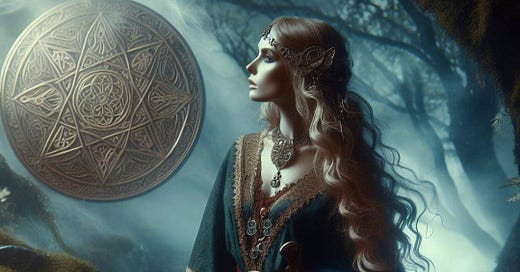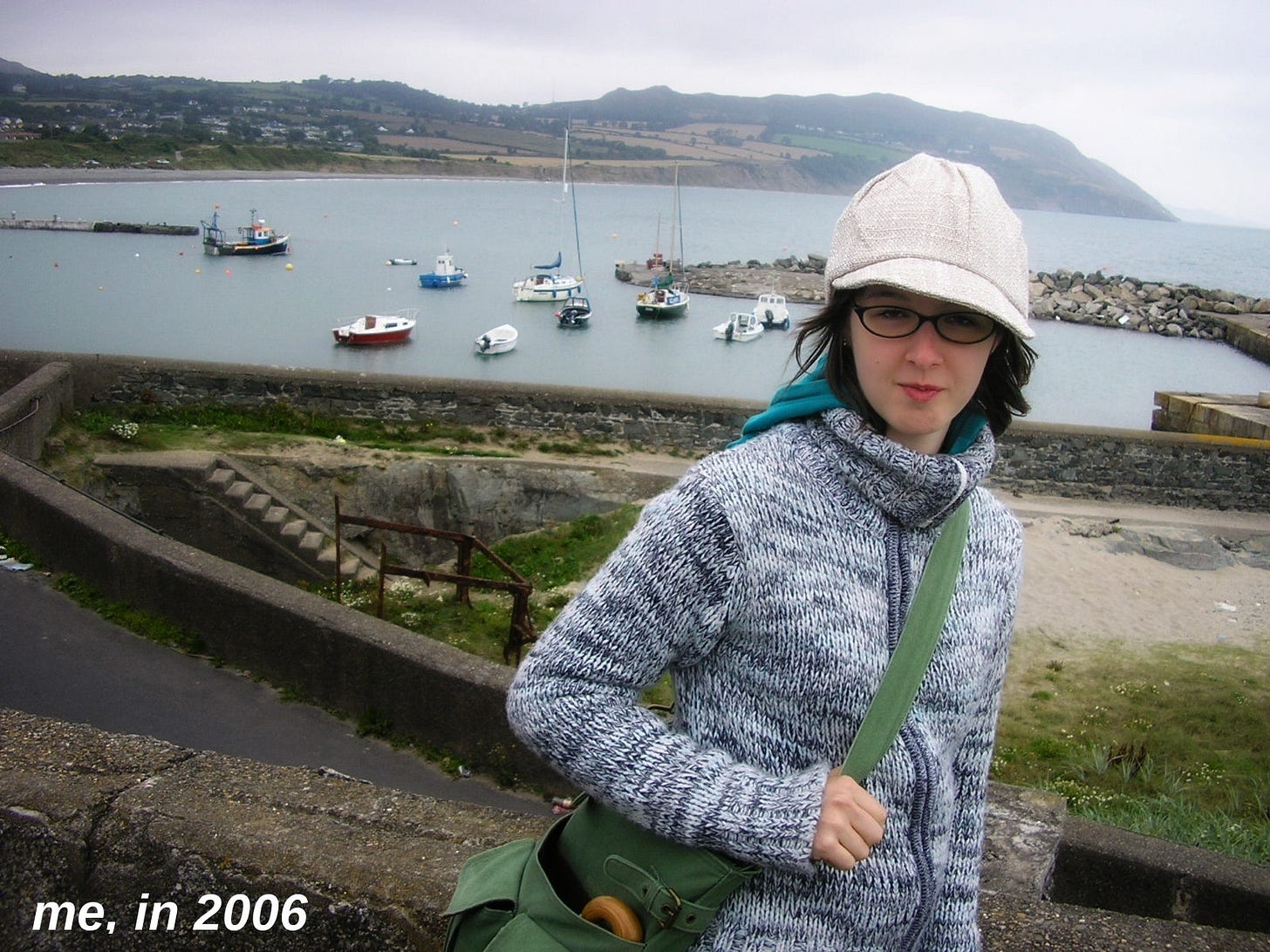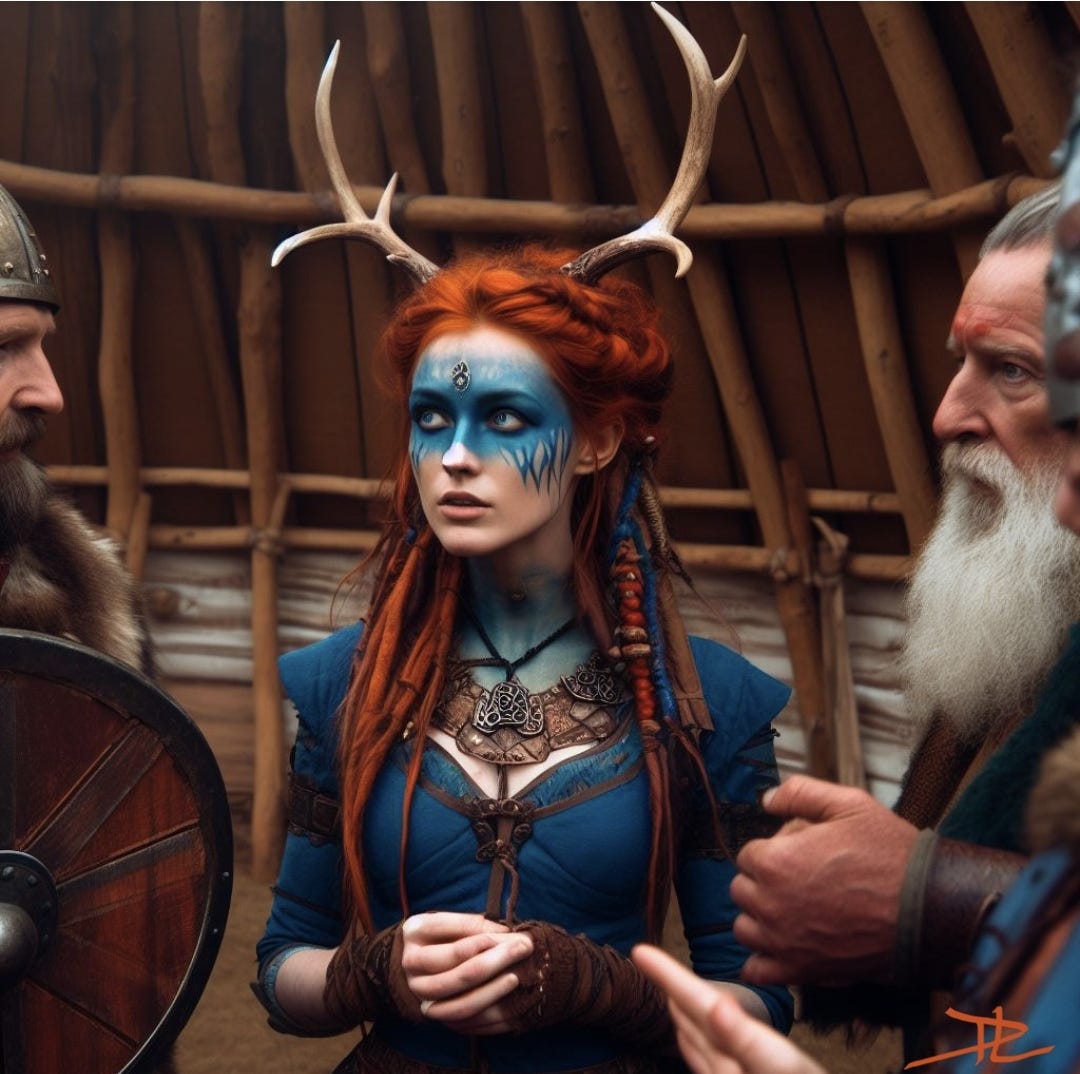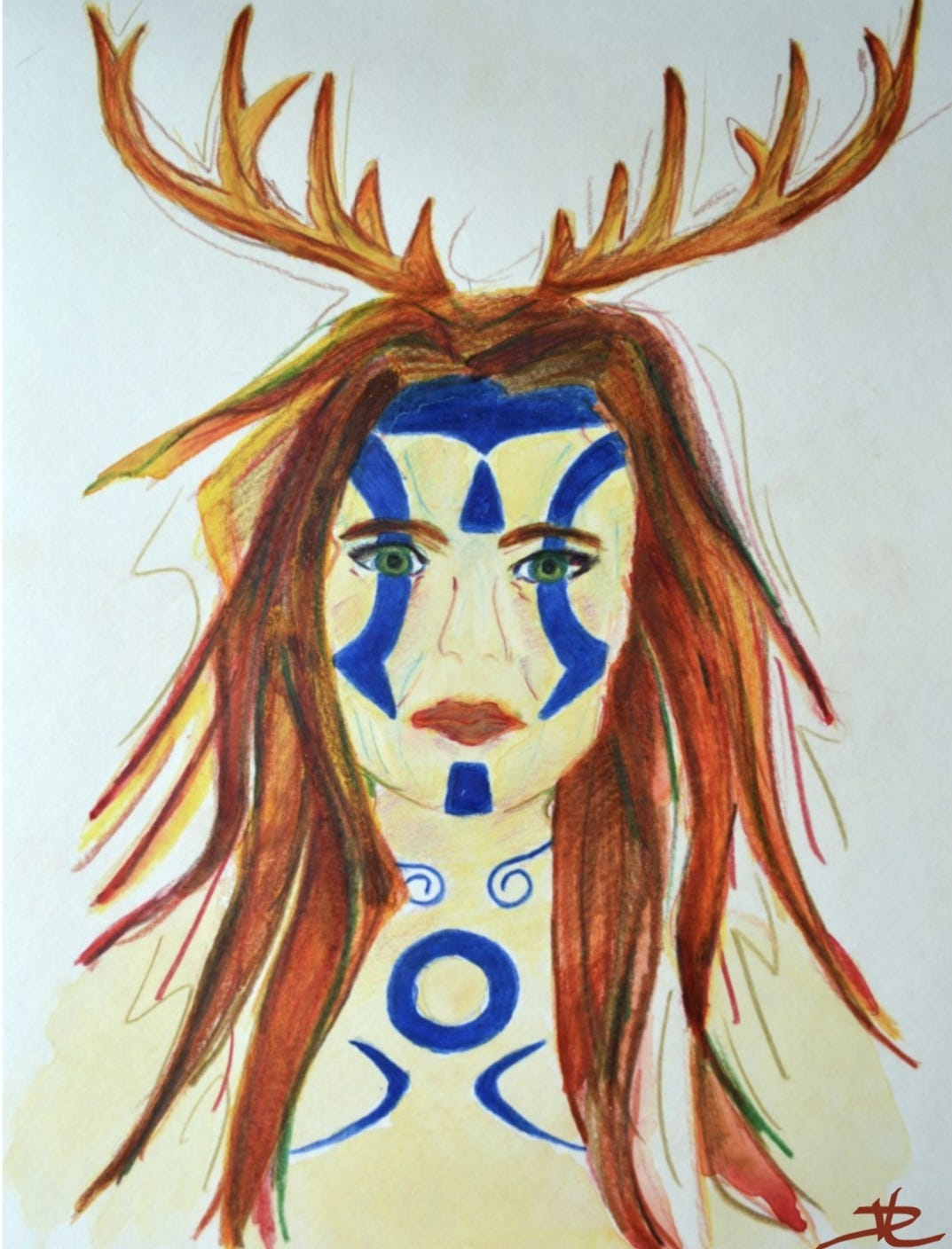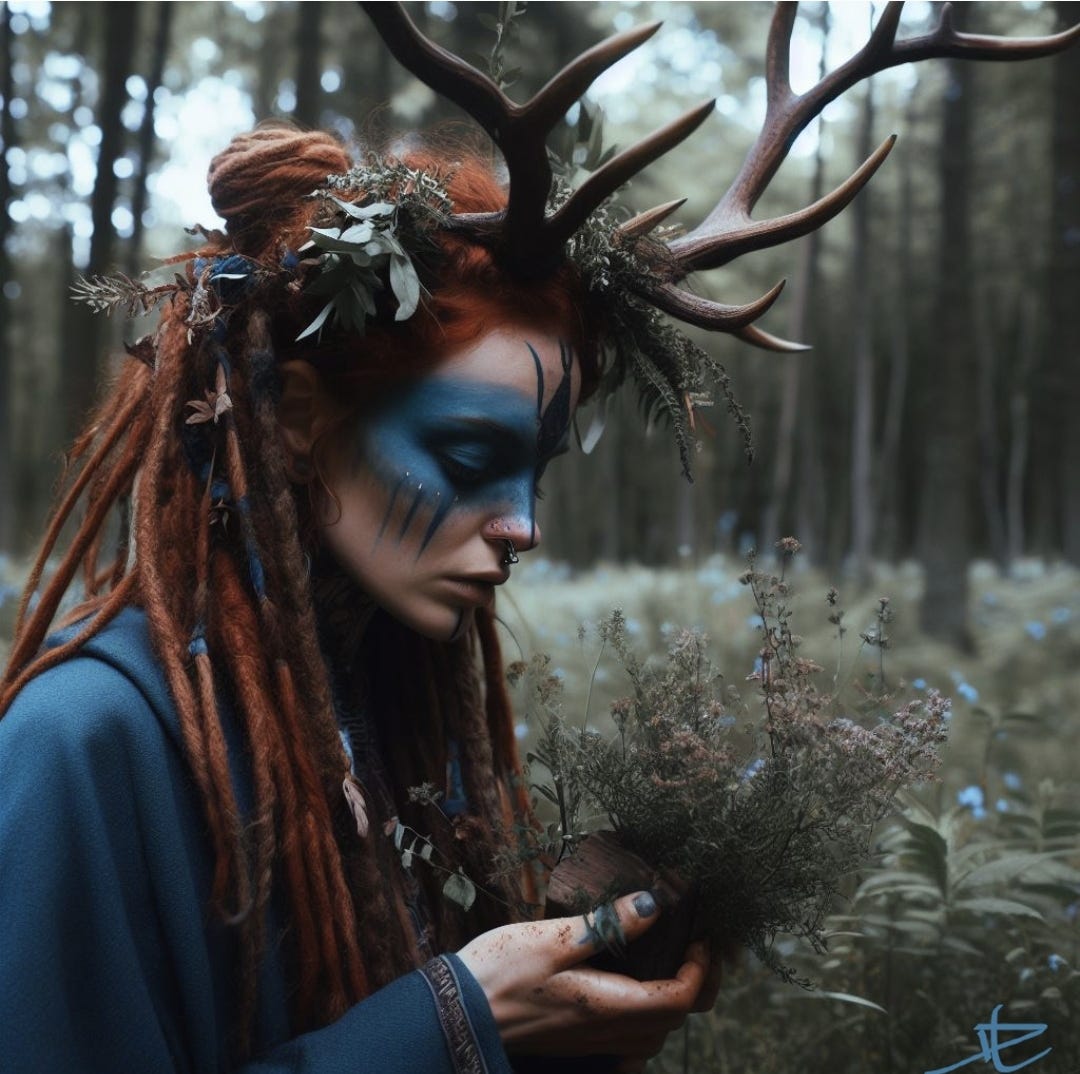The true history of the Banfilí (female poets) and Bandruí (female druids)
Step into the time machine with me...
A chapter from my upcoming book...
Banfili
A banfili is a female poet in ancient Celtic society. Female poets held a respected position in Celtic culture, preserving history and mythology through their storytelling.
"Ban" means woman or female, and "filid" (or “filí") means poet or bard.
When referring to multiple banfili, you say “banfilí” or a more official term is banfilid.
Bandruí
A bandruí is a female druid. Druids were members of the educated and religious elite in Celtic society, and this includes women who were spiritual leaders, healers, and advisors. (more on that later..)
"Ban" means woman or female, and "druí" means druid.
When referring to multiple bandruí, you say “bandruíthe”.
You may also hear or read the term “banduri”, this is a Romanized or Latinized form that was used by Roman historians (such as Tacitus) to refer to the female Druids.
If you are reading this then you are no doubt on your own mystical journey. A part of that journey for me has been sharing mystical history with the people, in a creative way.
I studied art, history, mythology. And was talking to angels and fairies and creating artwork and never stopped..
It just shifted and changed.
18 years ago I went to Ireland for the first time, when I was 20 years old. The friend with whom I traveled there , unexpectedly went home after barely 3 days, leaving me alone in Ireland… and it was great..
I traveled on my own for a few days and it was all divinely orchestrated because it was an activation of my druid-self that took place there. I cried on the plane back home. And felt like I was leaving “home”.
I went back in 2012 because I had a flight to the US to catch from Shannon in Ireland to Phoenix, so I spent 2 days exploring the area, and a new activation took place of a whole new area of the country.
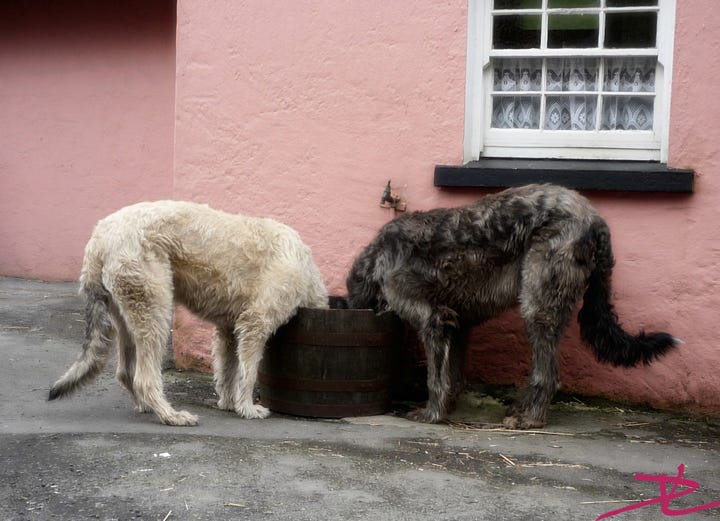
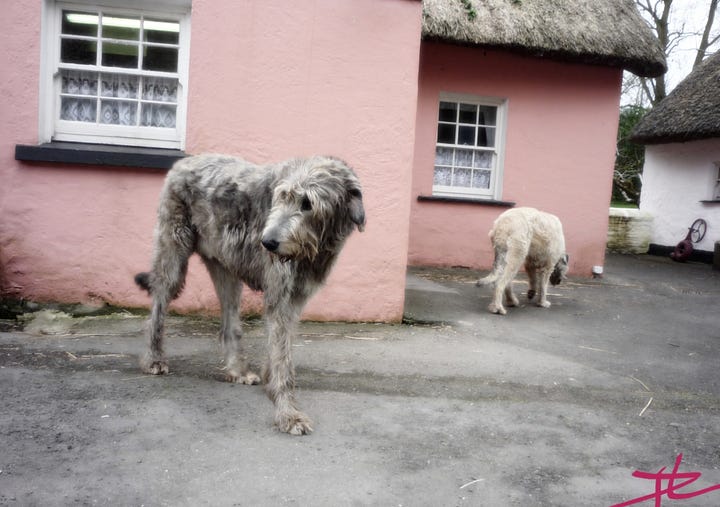
I had always been fascinated with fairy lore and witchcraft, so I was meant to end up there to get that activation, even though at that age I had not yet remembered the past lives there to the extent that I do now.
Little did I know back then that it was my path to become a modern day female bard/druid, and mystical story teller, a banfili.
I have talked about my vivid druid memories in other stories, and how it was difficult to find stories in the history books that explained who the druids truly were..
Until I bumped into Oliver Huntley; Essene-Druid, and sacred land guardian of the Emerald Vale in Wales, and Ryan McKenna [Ríain MacCionaodh]; ancient Scotland & Ireland expert. I went on an 8 week initiation with them into the world of Celtic Christianity. Which happened relatively late on my journey. I’d already been working for years on my own with fairy magic, the angels, the akashic records and star ancestors. And had a pretty solid foundation in Essene mystery school teachings and Aramaic through a prior initiation into Aramaic that I’d received from Oliver and Dale Allen Hoffman.
But it was on that 8 week adventure with Oliver & Ryan, into the world of Celtic Christianity that all the separate puzzle pieces that I’d had, suddenly all fit together. How Christianity was pagan, and how the fae were the truest form of feminine Christianity that I’d ever encountered.. And why of course.. the druids were female.. It was all so obvious suddenly.
I already studies enough of gnosticism to know that Jesus (
Yeshua Ben Yosef the person that we know as “Jesus”) traveled extensively, he spent a big chunk of his younger years in the Essene-Druid school of Britain where his uncle Noah had become a high Essene priest within the druid order. Anna, his grandmother had become a high druid priestess during her own travels in Britain. There is so much overlap between the druid teachings and the original Essene teachings that it’s too obvious.
So let’s dive into the bandruíthe and the banfilid, aka the women priestesses of the Celts that were silenced and erased from history books by the Romans..
To keep things simple I will refer to the Irish terms for “female druid” like I just discussed. These are Irish Gaelic but in other forms of Gaelic you may hear terms like Ban-bhàrd (female poet) and Ban-draoidh (female Druid) [Scottish Gaelic]. The Welsh use bardd for both male and female poets.
Culturally speaking this all applies to all of Ireland (+ Northern Ireland which is technically the UK but let’s not go there.. To me it’s Ireland and always will be Ireland) + The British Isles being:
Great Britain, which consists of: England, Scotland and Wales.
The Isle of Man, which is located in the Irish Sea, is a self-governing British Crown dependency.
Channel Islands, which are located off the coast of France.
(Both are British Crown dependencies but are not part of the United Kingdom or the British Isles proper; they are often grouped with the British Isles in a broader cultural sense.)
Hebrides: A group of islands off the west coast of Scotland, split into: Inner Hebrides, (e.g., Skye, Mull), and Outer Hebrides (e.g., Lewis, Harris)
Orkney Islands, located to the north of Scotland.
Shetland Islands, even further north than the Orkney Islands.
Isles of Scilly: A small group of islands off the southwest coast of England.
Anglesey, An island off the northwest coast of Wales. (I talk about Anglesey in my dragon story “Angels & Dragons & Other things” in relation to the Roman attacks on the druids.)
+ There are numerous smaller islands scattered around Great Britain and Ireland, such as the Isle of Wight (off England’s southern coast) and the Aran Islands (off the coast of Ireland).
In post-Atlantean “Celtic” times, Ireland (as well as the British isles, as described above), the Bandruí were important figures in the spiritual and even political and intellectual life of the Celtic people. These women played key roles in shaping the society in which they lived. Unfortunately though their stories were silenced with the rise of Roman Catholicism..
Back then it was normal for women who knew that they were seers, healers, and magical storytellers to be accepted and to be celebrated for these gifts and talents, they were not just spiritual guides but also scholars who possessed a deep understanding of the world around them, both the visible world and invisible one.
What we now call for instance an “akashic records reader” such as myself.. Were simply “banfilí” (magical storytelling women) who helped heal people through tuning into their “soul story”.
The Druids, both male and female, were the intellectual elite of their tribes. It could take almost two decades to gain the knowledge and skills required to serve in this role. Their education covered a wide range of subjects, including tribal law, plant/mushroom medicine, alchemy, astronomy, and astrology. They acted as judges, healers, strategists, and spiritual leaders, organizing the intellectual and spiritual life of the Celtic people.
I saw myself in 4th century Scotland (back then Pictland) standing in the middle of a roundhouse with all the “important men” of the tribe standing in silence as they listened to my advice. I was the only woman in the “inner circle” while the other women were standing in a larger circle around the men. It was then, back in 2017 that I started researching and dove into the female-druid rabbit hole.
Because so much of our recorded history comes straight from the Roman annals, much of history has been written down “through a Roman patriarchal lens”. But.. there is evidence that women-druids, the Bandruí, were also among their ranks and held positions of influence and respect.
Not all Roman writers ignored the women..
Tacitus, a Roman historian, recorded how female Druids, (he called them the Banduri), defended their people on the island of Anglesey, like I already mentioned. He also wrote about the Celts not making any distinction between male and female rulers, with women often engaging in politics and diplomacy. Something that I have seen in my own past life where a woman ruled the tribe.
The Bandruí were not only spiritual leaders but were also like I already mentioned also involved in local politic. and social affairs. Plutarch observed that Celtic women participated in assemblies, mediated disputes, and negotiated treaties, roles that were typically reserved for men in Greek and Roman societies. Pomponius Mela wrote of virgin priestesses on the island of Sena (modern-day Île-de-Sein in Brittany), who had the ability to foresee the future. These accounts show the wide range of responsibilities held by the female druids, and their significance in Druidic society cannot be overlooked.
Several notable “Bandruí” have been preserved in history and mythology. For example Ganna, a Druidess who traveled to Rome and was received by the Emperor Domitian. Another is Fedelma, a "banfili" or female poet, who served in the court of Queen Medb (Maeve) of Connacht.
The most famous descendant of a Bandruí is believed to be queen Boudicca, the leader of the Iceni tribe who spearheaded an uprising against Roman rule in Britain. Though many names have been lost in time, these examples show that women were well respected when it came to spirituality and politics in pre-Roman times.
Despite efforts by the Romans and Roman-Christians (NOT Celtic Christians who were basically druids) like Saint Patrick to suppress Druidism, through the destruction of sacred books and the desecration of holy druidic sites.. the wisdom of the Druids, including that of the Bandruí and Banfilí, never disappeared completely...
The knowledge survived because people passed down stories of their ancestors, of the land, and the true history.. Although those stories are what we now call “mythology” and “legends”. When I was walking through Brú na Bóinne [the Boyne Valley] in 2006, with its ancient megalithic sites, such as Newgrange, Knowth, and Dowth, I could feel the elven looking at me from the invisible realms and sharing their stories with me.

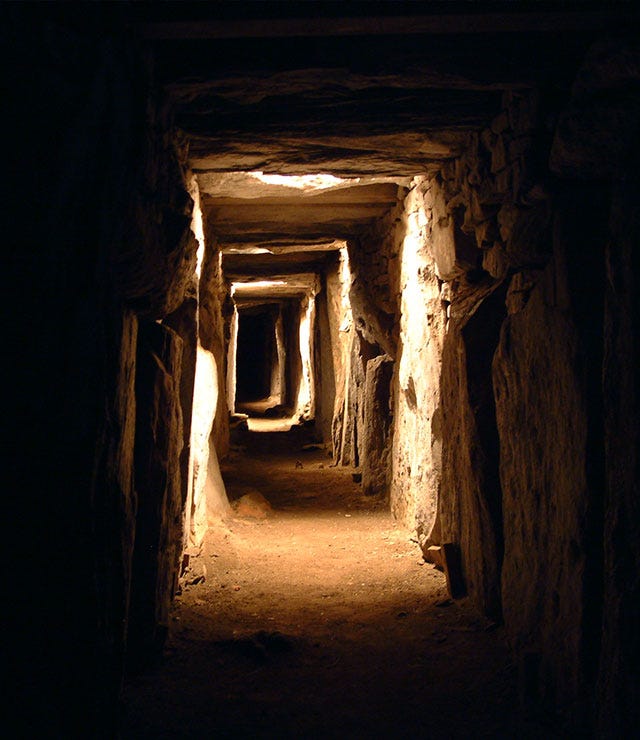
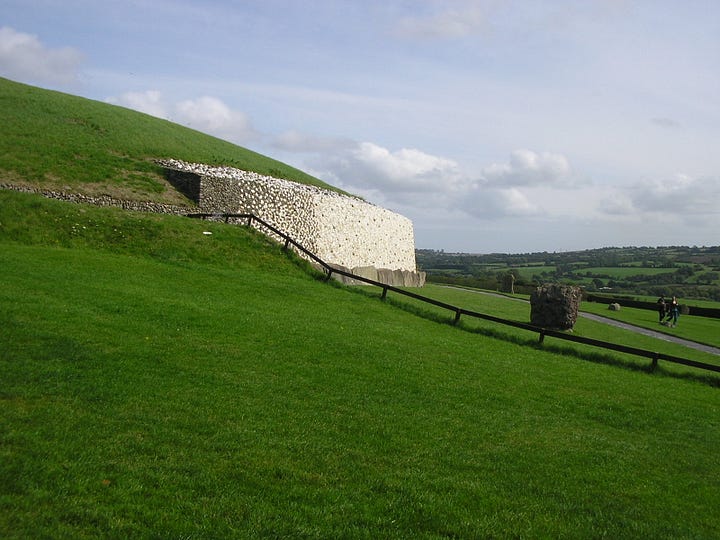

This is the lifetime that came to me first when I was catapulted into the akashic records.
Her role was mixed, a storytelling/healing oracle and future-seer, who was also politically engaged and setting traps for the Romans and hiding in trees with a bow and arrow (it was definitely an interesting incarnation to start remembering again).
Just as the traditional women-druids channeled their oracular wisdom through art, music, and stories, I have always expressed my Self in different ways (painting, crocheting, candle making, dancing, martial arts, photography, writing stories..)
More and more I’m becoming the all around magical storyteller, writing this book [Step Into The Time Machine] is a beautiful combination of visual art and stories meant to bring you with me in the realms where I can walk and travel, and I hold your hand and guide you through these worlds with me as you read the stories..
I feel as though I am continuing the legacy of the Bandruí, and honoring my own parallel incarnation that has been actively supporting my journey since 2017 when she showed herself to me.
By taking you with me in the akashic records, I am reconnecting you with ancient myths and legends in a way that speaks to your own experiences and helps you to understand your place in the greater cosmic narrative.
I am excited to present you with the entire Step Into The Time Machine book in a few months..
to pre-sign up if you want the book at an exclusive price when it comes out..
If you want a deeper dive into your own soul, I have a variety of different ways to help you, reach out to me to see how I can counsel you on your journey today. Beginning with free video courses and 1-1 short term or long term counseling ✨️
🐉 fine-tune your own intuition
🐉 dive into your soul history
🐉 dive into dragon messages for you
NEW:
Need help figuring out what service is right for you at this time?
𝙏𝙝𝙚𝙣 𝙛𝙞𝙡𝙡 𝙤𝙪𝙩 𝙖 𝙦𝙪𝙞𝙘𝙠 𝙦𝙪𝙚𝙨𝙩𝙞𝙤𝙣𝙣𝙖𝙞𝙧𝙚

